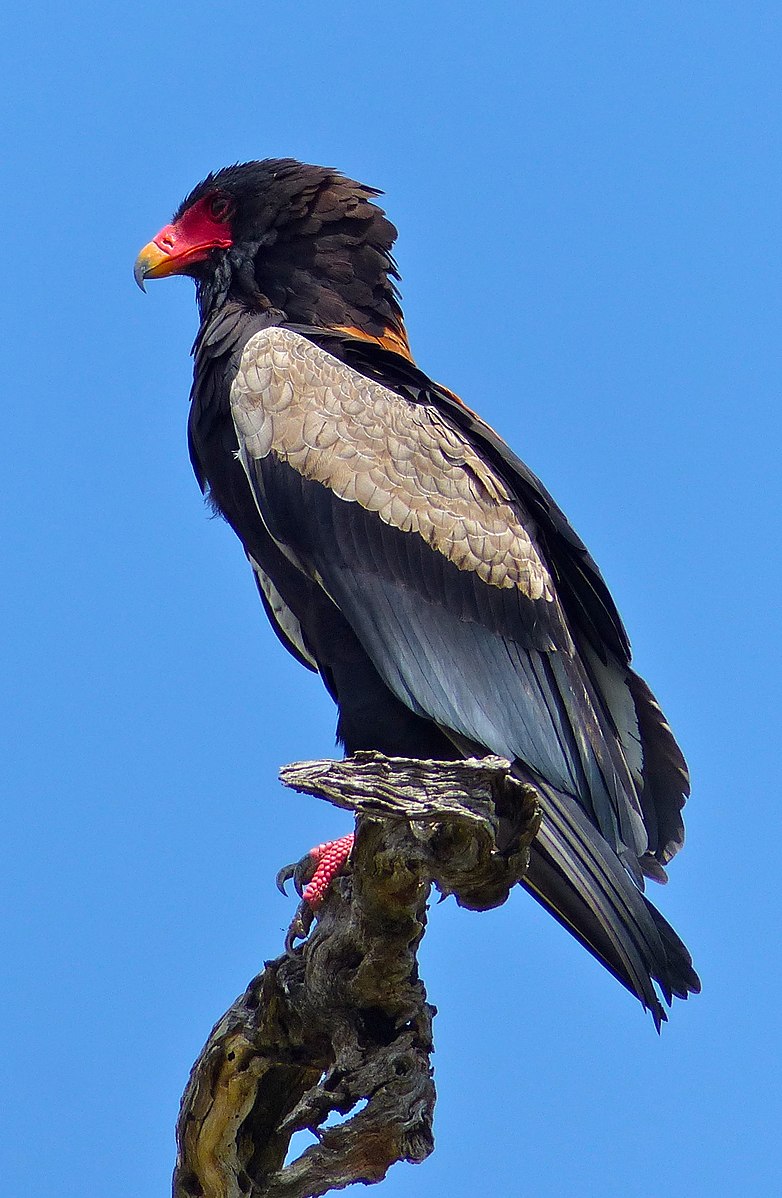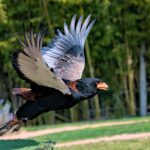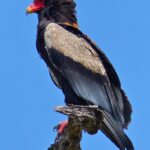Bateleur eagles (Terathopius ecaudatus) are highly aerial birds that spend a significant amount of time in the air, with some individuals covering up to 500 km (310 mi) in a single day. These impressive raptors are known for their unique flight patterns and impressive aerial acrobatics.
Bateleur Eagles’ Flight Patterns
Bateleur eagles are capable of a variety of flight patterns, including:
-
Soaring: Bateleur eagles are skilled at soaring, using their long, broad wings to glide effortlessly on thermal currents and updrafts.
-
Banking: These birds are adept at banking and turning, often executing tight spirals and other acrobatic maneuvers.
-
Low-Level Foraging: When hunting, bateleur eagles typically fly low to the ground, with their wings lifted above their body and rocking from side to side in an unstable-looking fashion.
When Do Bateleur Eagles Fly?
 Image source: Bateleur Eagle By Bernard DUPONT
Image source: Bateleur Eagle By Bernard DUPONT
Bateleur eagles are known to spend a significant portion of their day in the air, with some individuals spending up to 9 hours per day flying. They are generally active during the day, with their peak flight activity occurring in the early morning and late afternoon hours.
Daily Flight Patterns
-
Morning: Bateleur eagles often take to the skies in the early morning hours, using thermal currents and updrafts to gain altitude and begin their daily foraging and hunting activities.
-
Midday: During the hottest part of the day, bateleur eagles may engage in “sunbathing” behavior, standing upright with their wings spread open to warm their oils and improve their aerodynamics.
-
Afternoon: In the late afternoon, bateleur eagles become more active again, using thermal currents to soar and search for prey or carrion.
Seasonal Variations
The flight patterns of bateleur eagles can also vary depending on the season:
-
Breeding Season: During the breeding season, bateleur eagles may spend more time in the air, performing aerial displays and defending their territories.
-
Dry Season: In the dry season, bateleur eagles may cover larger areas in search of food, with some individuals recorded covering up to 300 miles in a single day.
-
Wet Season: In the wet season, bateleur eagles may be more localized in their movements, as prey is more abundant and accessible in their immediate vicinity.
Bateleur Eagles’ Hunting and Foraging
Bateleur eagles are dietary generalists, feeding on a variety of small animals and carrion. Their hunting range can be quite large, ranging from 55 to 200 km 2 (21 to 77 sq mi).
When foraging, bateleur eagles typically fly low to the ground, using their keen eyesight to spot potential prey. They may also engage in “sunbathing” behavior, which may help them rid their feathers of parasites and improve their aerodynamics.
Conservation Status and Threats
Bateleur eagles are considered near threatened, with their populations likely to qualify for a threatened category in the near future due to local development projects such as rainforest logging. These impressive raptors are found in central and southern Africa, primarily in savannas, thornbush, and open country.
Conclusion
Bateleur eagles are truly remarkable birds, known for their impressive aerial acrobatics and their dedication to spending a significant portion of their day in the air. Whether soaring on thermal currents, banking and turning, or engaging in low-level foraging, these birds are a sight to behold. As we continue to learn more about their flight patterns and behaviors, we can better understand and appreciate the unique adaptations that make bateleur eagles such successful and captivating birds of prey.


